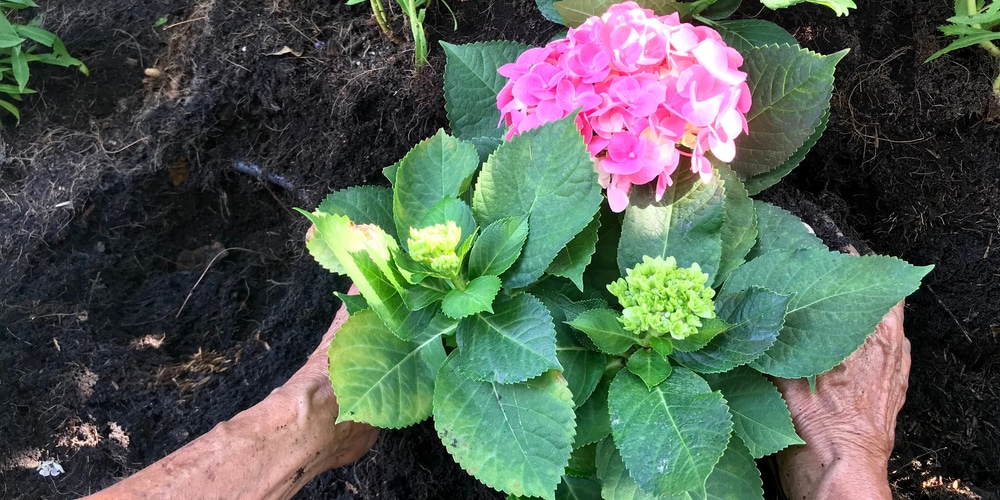If you know something about flowering plants, you probably are familiar with hydrangeas. This delicate bloomer can make any garden look more attractive. The plant is a traditional choice for many gardeners and has recently become one of the most popular flowering shrubs for landscaping.
It is not hard to understand why. These showy flowers are versatile and relatively easy to maintain. They are not susceptible to diseases, work well even in shady areas, are long-blooming, and require little pruning. Plus, these shrubs are one of the few types flowering from late summer to fall.

If you need a plant for longer blooming seasons and that you can grow with little effort, hydrangea is your solution. While most hydrangeas are cold-hardy, they wouldn’t tolerate the low temperature of zone 4. They will not survive snow or frost. Luckily, botanists have developed new varieties to withstand different conditions over the past decade.
For the joy of northern gardeners, you can find varieties that will survive even colder winters. Keep reading this “Hydrangea Zone 4” Ultimate guide we put together to explore what options you have. Here, we included our tips to make your hydrangea flourish in your garden.
Hydrangea Zone 4: Our Growing Tips
To be successful at growing hydrangea, you first must choose a cold-hardy variety. Once you pick a species that withstands zone 4 temperatures (more on this in the following section), you need to place it somewhere it will thrive.
For starters, these plants need moist soil. Avoid letting them dry too much. Consider adding mulch around your hydrangeas to increase water retention and regulate the temperature of the ground.
Don’t forget to do so before the winter arrives to protect your plants from frost and extreme weather conditions. Each variety of hydrangea tends to have different lighting requirements. Makes sure you check the needs of your species before placing them somewhere. In general, these plants need at least three hours of sun. So full shade isn’t an option.
For more prolific blooms, consider fertilizing once per year. Use a slow-release product to maximize flower production and get the best results. Also, if you like to pick hydrangeas of brilliant colors, you may have to tweak the pH of your soil. For instance, blue hydrangeas prefer acid conditions (between 5.0 and 5.5), while pink varieties will give you the best results in alkaline to neutral situations (pH around 7.0 or higher)
Hydrangea Varieties for Zone 4

Choosing hydrangeas for cold climates can be tricky. You can select several species, but you must pay attention to the plants’ needs. If you live in zone 4, you should look for the hardiest species. Botanists classify hydrangeas by the blooms and leaves.
While most of us are familiar with the classic cluster flowering plants, you may not know about panicle and lacecaps types. Both tolerate cold temperatures best and are good options for zone 4. But let’s have a look at a couple of examples of plants you can safely add to your garden.
Bobo Hydrangea
This new hybrid is hardy to zone 3 to 8 and perfect for yards with limited space. Indeed, bobo hydrangea is a dwarf variety that doesn’t grow more than three feet tall.
Despite its compact size, it is an eye-catching addition to any space. It produces attractive volumes of creamy-white flowers that turn pinkish during fall. Bobo hydrangea will keep displaying flowers until frost: it is one of the best ways to keep your garden alive when most other plants are dormant!
Angel’s Blush Hydrangea
Angel’s Blush Hydrangea adds a delicate color to your landscape when most plants are bare or not in bloom. Perfect for zone 4-8, this plant requires full sun and moist conditions. Its long-lasting white flowers turn rosy in the fall.
Limelight Hardy Hydrangea
Like most types of paniculate, the limelight variety does well in cold weather. It is hardy and performs well even in zone 3, so you won’t have to worry when the winter comes in your region. Its delicate-looking and creamy white flowers turn pink in the fall. These plants do well in most conditions, but you should plant them under the full sun for best results.
Hydrangea Zone 4: Conclusion
As you can see, it is possible to grow hydrangea in zone 4: all you have to do is select a variety suitable to your region!
Related Article: When to Plant Hydrangeas?
